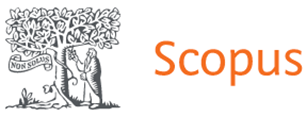Ethnopolitical Processes in the Hutsul and Boykos Regions in the 1920s (On the Documents of Local Authorities of Stanislaviv Voivodeship)
DOI:
https://doi.org/10.15330/jpnu.8.2.34-44Keywords:
ethnopolitics, Hutsul region, Boykiv region, political parties, public organizations, national identityAbstract
The events of recent years have shown the need for regional studies. The problems of regionalism have a deep historical retrospective. The Second Polish Republic attempted to change the map of regionalism, in particular in the Ukrainian Carpathians, inhibited by the Ukrainian ethnographic groups of Hutsuls, Boykos, Lemkos. This attempt was unsuccessful and the local population didn’t support it. How did the regional Polish government see these processes? Despite the significant amount of work on the given subject, the period of the 1920s is not sufficiently researched. This article focuses on the political sources of identification, namely the activities of parties and public organizations in the Hutsul and Boykiv regions of 1924–1929 within the Stanisłav Voivodeship, it studies them through the perception of local Polish authorities. The unpublished documents of the State Archives of the Ivano-Frankivsk region make up the source base of the study. The analysed documents prove that the Ukrainian national identity of the Galician Hutsuls and Boykos in the 1920s was real and functional. It was the active position of political parties as well as cultural-educational, cooperative and other organizations, the position with a distinct Ukrainian ethno-national character that played an important role in its "formation" and manifestation. The most popular parties were the Ukrainian National Democratic Union and the Ukrainian Socialist Radical Party, both of them clearly stated their disagreement concerning the issue of the Ukrainian lands being a part of Poland and they strived for an independent Ukraine. Pro-Polish parties were far from very popular. Compared to Hutsulshchyna, Galician Boykivshchyna was characterized by an obviously higher degree of ethnical politicization. The ethno-political processes of the 1920s in the Hutsul and Boykiv regions resulted in the establishment of the Ukrainian national self-consciousness. In practice, on the local level even Polish officials did not question the national roots of Hutsuls and Boykos and them being Ukrainian; this fact only adds to the artificial character of the following Polish policy of local "regionalisms" of the 1930s. In general, the imaginary picture of the ethnical-political process in the region, provided by the local authority documents, was objective. The question whether it influenced the political decision-making process is open and still to be studied.











